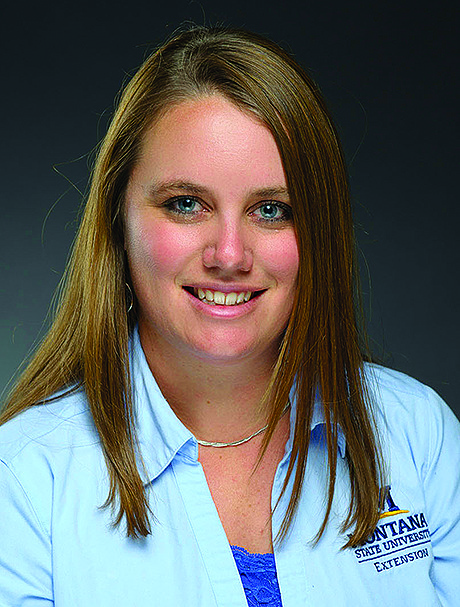Digging Into Soil Health: Applications For Gardeners
 | Author:
Allison Kosto, MSU Broadwater County Extension Agent
MSU Broadwater County Extension Agent |
Digging Into Soil Health: Applications for Gardeners
Allison Kosto
MSU Broadwater County Extension Agent
Even though it’s a much smaller scale, soil health in a home garden is as important as cropland. However, due to the smaller scale, it’s actually much easier to “overdo” soil health practices in a garden which can lead to issues with plant growth and development.
This is the last in a three-part series digging into soil health. The first article focused on soil health broadly sharing information about the importance of soil health, soil characteristics, soil food web and organic matter. The second article focused on techniques to apply soil health principles to cropland, and this article will provide strategies to improve soil health for home gardeners.
One of the key principles for soil health is to minimize or eliminate soil disturbance. Turning over the soil whether by shovel or with a tiller is a common practice in the garden as a way to prepare for planting. When this happens, it destroys soil structure, disturbs beneficial fungi, microorganisms and other parts of the soil food web, and increases decomposition of organic matter. The less you need to till or disturb the soil the better. There are a number of strategies to reduce tillage. One of the more popular techniques is “lasagna gardening” which uses a layer technique to build soil instead of tilling. Raised beds also tend to require less soil movement than an in-ground garden. If you choose not to till the soil, soil compaction can be an issue, so designate areas for foot traffic or carts to minimize this.
Keeping the soil covered is another strategy to improve soil health. If you don’t keep it covered, then nature will find a way to cover it and that is usually with weeds. Additionally, bare soil is subject to increased erosion, water loss and increased soil temperature. Thankfully with a garden, there are many options to cover the soil.
Mulch is one option for ground cover. Organic mulches include grass clippings, hay, straw, cardboard or gravel. Natural mulches should be applied after the plants begin to grow and the soil has warmed. Extra nitrogen fertilizer is generally needed for most natural mulches because the decomposition process will rob nitrogen from the soil. Most natural mulches can be composted or tilled in at the end of the season to increase organic matter in the soil. Even though synthetic mulches will not provide as many soil health benefits as organic mulches, they are still better than bare soil. Synthetic mulches include black plastic, clear plastic or landscape cloth.
An even better choice for ground cover is cover crops. Living plants are the ideal way to provide food for soil microbes. Cover crops are often called “green manure,” because they will add organic matter and nutrients back to the soil. Different types of plants used as cover crops provide different benefits. Legumes such as clovers or peas can fix nitrogen and add the nutrient back to the soil. Other plants have deep or fibrous roots that break up soil compaction and increase water filtration. Some crops can be a sacrifice crop by stopping insects like grasshoppers or disease from getting to the more valuable parts of the garden. Some cover crops make excellent weed control by preventing or slowing the spread of undesirable plants. In a garden setting, nearly all cover crops are tilled in which adds rich organic matter to the soil and benefits soil health. Common garden cover crops for Montana include clover, buckwheat, oats, barley, winter wheat or winter rye.
Another easy way to improve soil health in the garden is through organic matter. The ideal range for organic matter is 4 to 6 percent. When organic matter is too high, then nutrients become tied up in decomposing organic matter and are not accessible to plants. If you incorporate organic matter in the spring, make sure it is fully composted. In the fall you have a little more flexibility as it will decompose some over the winter. Options include grass clippings, leaves, aged manure, compost and peat moss. Herbicide carryover can be an issue, especially with grass clipping and manure so make sure you are familiar with the source before applying it to your garden. Avoid wood chips and sawdust until they are fully composted because wood products take much longer to break down and will tie up nutrients in the soil.
Lastly, I highly recommend soil testing as a tool to allow you to monitor your soil over time. Research has shown that home soil tests are typically not very accurate, so a laboratory test is recommended. A basic garden test is less than $20 and is worthwhile investment to give you baseline for your soil. If desired, MSU Extension in Broadwater County can help you with this process and even send it to a lab for you.
If you have questions about soil health practices or to inquire about soil testing, stop by your local MSU Extension Office in Broadwater County at 416 Broadway or contact us at 406-266-9242 or allison.kosto@montana.edu.